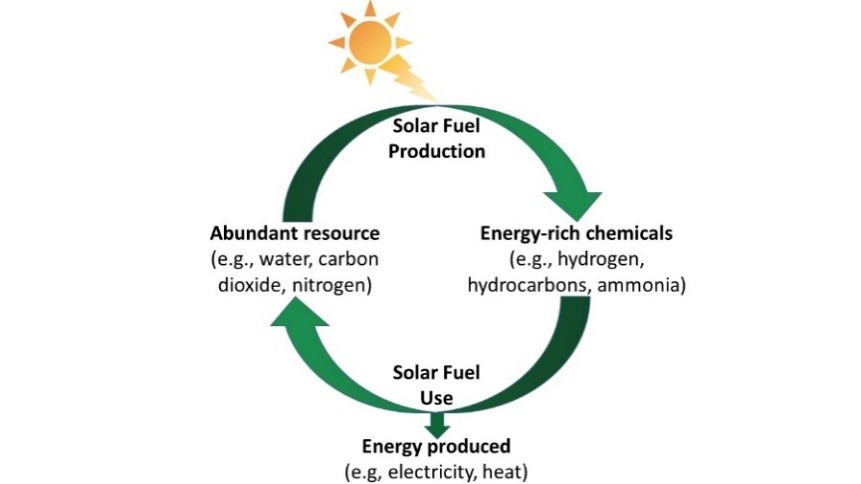Welcome to Learn to Astronomy! In this article, we will explore the fascinating topic of the Sun’s main fuel. Discover how nuclear fusion, specifically the conversion of hydrogen into helium, powers our star and sustains life on Earth. Join us in uncovering the secrets behind the Sun’s incredible energy production.
The Main Fuel of the Sun: Unveiling the Powerhouse of Nuclear Fusion in Astronomy
The Sun, our nearest star, is a powerful celestial body that fuels life on Earth and serves as the central energy source for our solar system. At the heart of the Sun lies a process known as nuclear fusion, which involves the merging of atomic nuclei to release an immense amount of energy. This fusing of atomic nuclei occurs primarily in the Sun’s core, where conditions are extremely hot and dense.
The main fuel driving the Sun’s fusion reactions is hydrogen, the most abundant element in the universe. Within the core, intense heat and pressure cause hydrogen atoms to collide with such force that they overcome their mutual electrostatic repulsion and fuse together to form helium. This process, known as the proton-proton chain, is responsible for the majority of the Sun’s energy output.
Nuclear fusion within the Sun is a delicate balance between gravitational forces pushing inward and the expansive force of the released energy pushing outward. The tremendous gravitational pull of the Sun compresses its core, generating temperatures of about 15 million degrees Celsius. At such extreme temperatures, hydrogen atoms possess enough kinetic energy to overcome the electrostatic repulsion, allowing the nuclear fusion process to occur.
As hydrogen nuclei combine to form helium, a small fraction of the mass is converted into energy according to Einstein’s famous equation, E=mc². This conversion of mass into energy releases an enormous amount of light and heat that radiates from the Sun’s surface into space, providing warmth and allowing life to flourish on Earth.
Understanding the mechanisms behind the Sun’s nuclear fusion reactions is crucial for studying other stars and the overall evolution of galaxies. Scientists around the world continue to explore ways to harness the power of fusion as a potential future energy source on Earth, striving to replicate the Sun’s immense energy production in controlled environments.
In conclusion, the Sun’s main fuel for nuclear fusion is hydrogen, and this process generates an immense amount of energy that powers our solar system. By unraveling the intricacies of fusion within the Sun, astronomers gain valuable insights into astrophysical phenomena and humanity’s quest for sustainable energy solutions.
Earth’s Evolution in 10 Minutes
[arve url=”https://www.youtube.com/embed/LinWJsangs4″/]
NASA Just Announced They Are Monitoring a Huge Escalating Anomaly On The Moon!
[arve url=”https://www.youtube.com/embed/UzZBuRV4Stc”/]
Frequent questions
What is the primary source of fuel for the Sun in Astronomy?
The **primary source of fuel** for the Sun in Astronomy is **nuclear fusion**. Nuclear fusion is a process that occurs in the core of the Sun, where hydrogen atoms combine to form helium. This reaction releases an enormous amount of energy in the form of light and heat, which is what makes the Sun shine.
How does the Sun generate energy, and what is its main fuel?
The Sun generates energy through a process called nuclear fusion. In its core, the Sun fuses hydrogen atoms together to form helium, releasing a tremendous amount of energy in the process. This energy powers the Sun and provides heat and light to our solar system.
The main fuel for this fusion is hydrogen gas (H2), which makes up about 74% of the Sun’s mass. The intense pressure and high temperatures in the Sun’s core create the conditions necessary for nuclear fusion to occur. As hydrogen nuclei collide and fuse, they release an immense amount of energy in the form of gamma rays, which are then converted into visible light and other forms of electromagnetic radiation. This continuous fusion process sustains the Sun’s energy production and keeps it shining brightly.
In the field of Astronomy, what is the main fuel that powers the Sun’s continuous energy output?
The main fuel that powers the Sun’s continuous energy output is **nuclear fusion**. Through this process, the Sun fuses hydrogen atoms together to form helium, releasing massive amounts of energy in the form of light and heat. This fusion reaction takes place at the Sun’s core, where the temperature and pressure are extremely high. It is the continuous supply of hydrogen fuel and the fusion reactions occurring within the Sun that sustain its energy output, making it shine brightly for billions of years.
In conclusion, hydrogen is the primary fuel that powers the Sun, sustaining its ongoing process of nuclear fusion. This abundant element fuels a series of reactions within the Sun’s core, where immense temperatures and pressures enable hydrogen atoms to combine and transform into helium. This process releases an incredible amount of energy in the form of light and heat, radiating outwards to provide warmth and sustenance to our planet. Understanding the role of hydrogen as the main fuel source not only deepens our comprehension of our closest star but also sheds light on the fundamental processes that drive the universe as a whole. As we continue to study the Sun and other celestial bodies, our knowledge of the main fuel of the Sun will undoubtedly expand, enriching our grasp of the cosmos.

